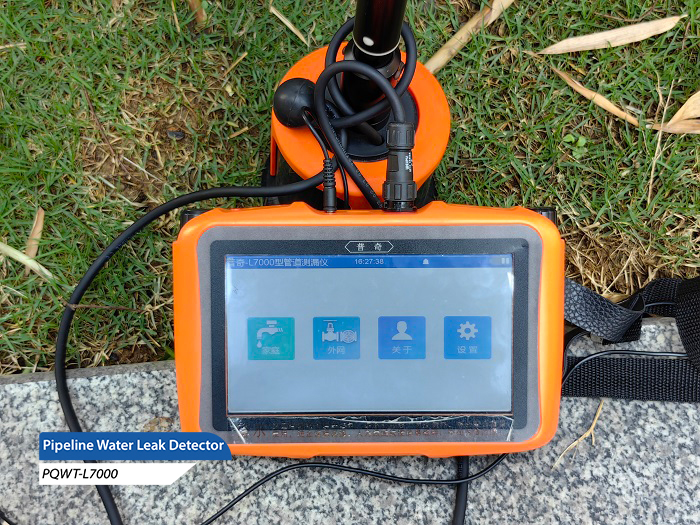Water pipe, as an important part of home life, its safety and stability are directly related to the quality of our daily life. However, with the passage of time, problems such as aging and breakage of water pipes become more and more prominent, and water leakage occurs from time to time. In order to find and solve these problems in time, pqwt water detector was born. With its accurate positioning ability and efficient working mechanism, it has become a powerful assistant for modern home maintenance. This article will take you in-depth understanding of the operation of pqwt water detector guide, revealing the working principle behind it, so that you can easily master this practical skill, to ensure the safe and stable operation of home plumbing.

1. Equipment preparation and connection
Before operating the pqwt water detector, first make sure all components are complete and in good condition. Connect the main unit, headset and sensor correctly to ensure a solid and reliable connection. Afterwards, turn the device on and off and put on the headset to prepare for the next inspection.
2. Sensor placement and sound monitoring
Next, we need to place the pqwt water detector sensor on the pavement above the pipe. During the placement process, the sensor should be moved step by step and the sound changes should be carefully listened to through the headset. Since water leaks produce specific sound vibrations that are transmitted to the ground, we can listen to these sounds to initially determine the location of the leak.
3. Signal Strength Comparison and Water Leak Location
As the pqwt water detector sensor moves, we need to compare the strength of the sound signal at different locations. Usually, the closer the water leak, the stronger the sound signal is; conversely, the weaker it is. By comparing multiple points repeatedly, we can determine the location of the strongest sound vibration, which is often the location of the water leak.
4. Consider additional factors and comprehensive analysis
When locating the water leakage point, in addition to considering the strength of the sound signal, we also need to consider some additional factors. For example, the layout of the pipeline, direction, tee, bend and other structural features, as well as water pressure, burial depth, buried layer and other environmental factors may have an impact on the propagation and reception of sound signals. Therefore, we need to have a clear understanding of the layout and direction of the pipeline and consider these factors comprehensively during testing to improve the accuracy of positioning.
5. Auxiliary Tests and Verification
In addition to using leakage detectors for localization, we can also combine other auxiliary tests to verify the safety performance of pipelines. For example, strength test and tightness test are conducted to assess the pressure-bearing capacity and sealing performance of the pipeline by increasing the pressure to the test pressure with a pressurized pump and observing the pressure change.
6. Operating precautions and safety tips
When operating the pqwt water detector, you need to pay attention to some matters to ensure safety. First, ensure that the equipment is in good condition and avoid using damaged or faulty equipment. Second, stay focused during the detection process, listen carefully for changes in sound and record data accurately. In addition, special care should be taken when approaching potential leaks to avoid further damage to the pipe.
By following the above steps and precautions, we can effectively use the pqwt water detector to locate leaks and take appropriate measures to repair and treat them. This will help ensure the safe operation of your home plumbing and reduce the potential risks associated with water leaks.








